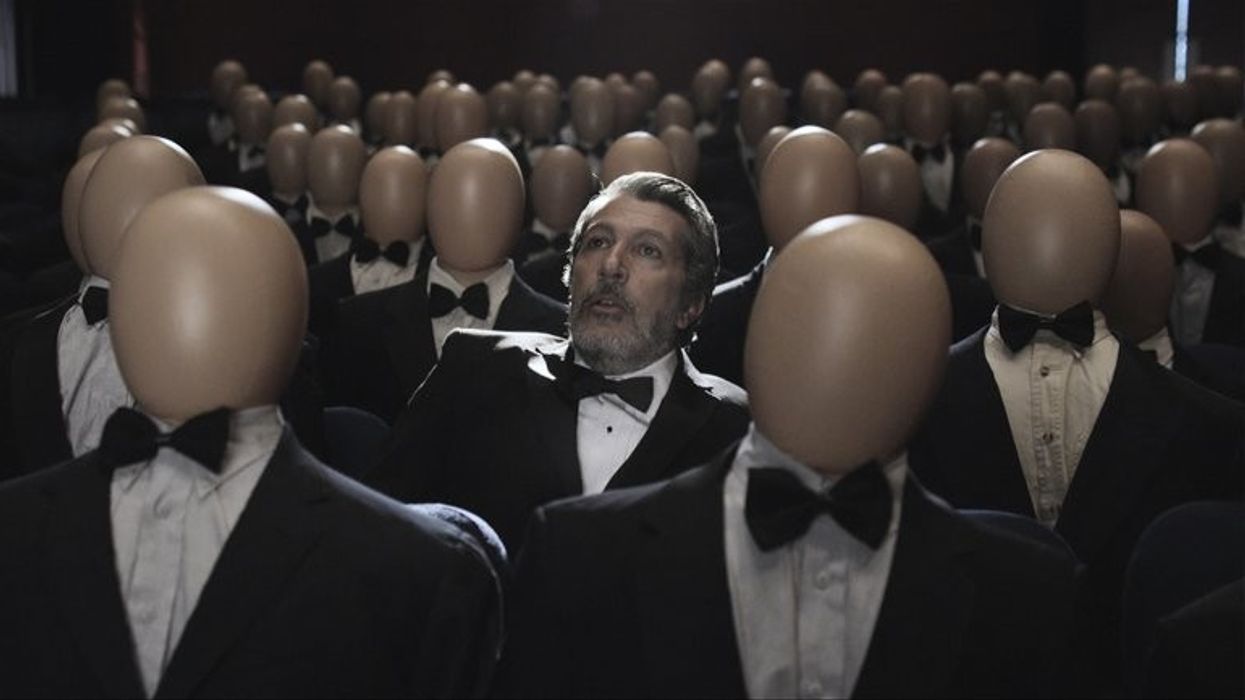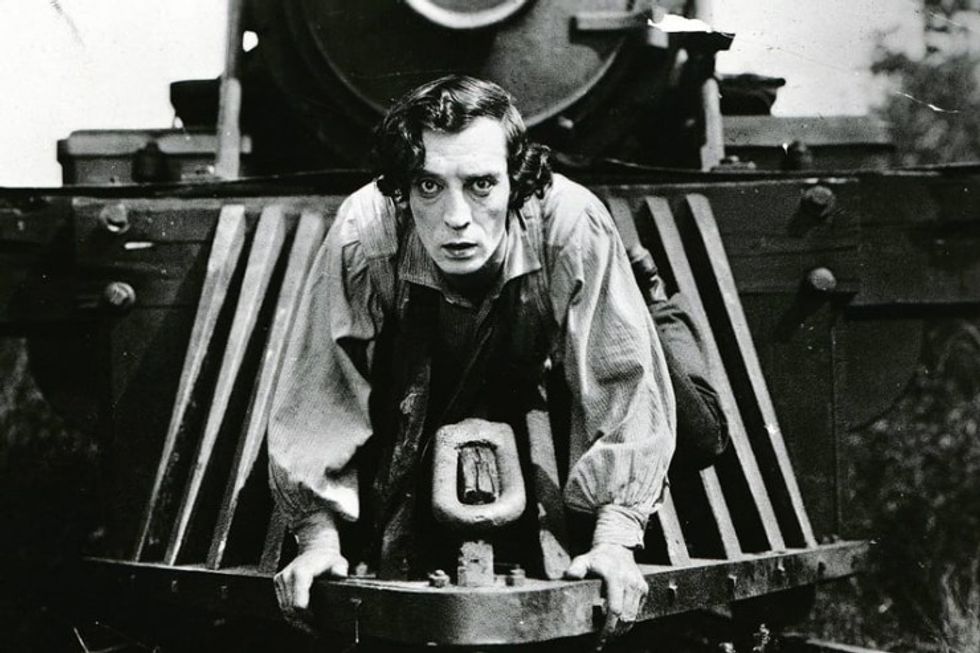The Rise of Surrealism and Why You Should Use It More
We are all a little strange, so why not showcase your strangeness in your work?

Every modern film dips its toe into surrealism. It’s one of the most influential movements of the 20th century, allowing uncanny imagery that dissolves into the next shot with the faintest storyline keeping it all together. Although surreal films tend to provide imagery that is shocking and strange, the goals of these types of films are to open the inner eye into a shared dream state of cinema.
Surrealist film started as an artistic movement in the early 1920s in France. These artists weren’t looking to start a new trend in filmmaking, but rather to create a space that shared and explored the unified rejection of the oppression of modern society. It was and still is an external and internal liberation that could only be achieved in filmmaking.
André Breton stated in his first surrealism manifesto that these artists strived for, “Psychic automatism in its pure state, by which one proposed to express—verbally, by means of the written word or in any other manner—the actual functioning of thought dictated by the thought in the absence of any control, exercised by reason, exempt from any aesthetic or moral control.”
This freedom from the restraints that allow the subconscious to work is why films with trippy imagery, dreamlike sequences, or bizarre imagery are labeled as surreal or Lynchian.
For a film to be surreal, it must exploit the artistic creativity of randomness and the imagination that contradicts traditional values, and elevates the absurdity of the accepted view of the world through free-flowing thought. Screened breaks down how surrealism in film first started and how we can recognize its lasting appeal in modern cinema through the irrational, dream state, and nightmare state. Check out his full video here:
Irrational
There is a strong sense of strangeness in a surrealist film. What an audience expects is changed and the nature of purpose is challenged. Images and actions are disorienting to remove logic from reality. The film does this by exploring conflicting images, concepts, or actions, like a man eating his own clothes while starving at a restaurant in Jan Švankmajer’s 1992 short film, Food.
Characters are typically found in unexplainable situations, and their actions blur the line between order and insanity, though the insanity is justifiable through the imagery.
In Luis Buñuel’s The Exterminating Angel, a group of wealthy dinner guests is unable to escape a lavish dinner party, and their increasing resentfulness of being shut out from the outside world brings to light their worst tendencies. Their search for liberation and the tension that builds showcase the battle between desire and social order that is prominent in surrealism.
This is the irrational aspect of surrealism as letting go of the definition of what a human is. Releasing this constraint on what is and what isn’t allows for the filmmaker to show the ridiculous nature of what is normalized in our society. The irrational does not rely on shock as much as it does humor.
Masters at finding the humor in the nonsensical were Buster Keaton and Charlie Chaplin. These two were able to create random, haphazard, and irrational stories that mirrored the absurdity of modern society.
Humor, as many of us know, is a great way to disassociate from the chaos that surrounds us. It allows us to recognize the flaws in our system that we fail to acknowledge in everyday life. Connecting surrealism with humor creates a space that is like a child’s state of mind, releasing us into a state of being where the things that define us have no definition.

Dream State
In our daily life, we edit our own daydreams, flashbacks, and memories because they are deemed unimportant or interruptive. Shouldn’t dreams have the same importance as reality? Are dreams not an extension of our minds that bleed into our consciousness? Even as you’re reading this, your mind dips into memories or other thoughts that we have labeled as intrusive instead of accepting that they are contributing to our state of being.
A surrealist film is easily identified through its dreamlike qualities. We all have dreams that are fragmented and nonlinear. Filmmakers who focus on the surreal believe that dreams can be used to solve fundamental questions about life.
Films like The Discreet Charm of the Bourgeoisie and Federico Fellini’s8 ½ use the dream state to carry and confuse the narrative of their stories. The use of dream logic brings to life anxieties and personifies a person’s desire for an escape from reality by flashing back into childhood memories or memories of a secondary character.
Satoshi Kon’s animated film, Paprika, pushed the limits of animation and the dream state, creating a film that allows the free flow of thoughts and the malleability of dreams. The unstable mess of what our dreams are doesn’t follow logic but follows a connection of subconscious thoughts and memories. Christopher Nolan’sInception, which was heavily influenced by Paprika, follows the idea of connecting the subconscious but fails by giving the subconscious rules and structure. It goes against the surrealist ideal of the free flow of thought. The dream state blurs the lines between contradictions; past and present, living and death, dream and reality. A place where we can explore the hidden parts of our minds without judgment or external logic.

Nightmare State
For the surrealist, movies are the closest way to recreate a waking dream. You are subjected to a stream of imagery that erases the world around you. It is only distressing when you are a viewer who is unable to participate. You are subjected to the dark side of a dream.
Many surrealists in modern film distorted the familiar and turned it into the uncanny to create discomfort for the viewer. The uncanny is something that is familiar yet distant and disturbs the line between imagination and reality. In these films, it is usually found in random coincidences, seeing double, and a return to the repressed and undigested trauma.
This dark side is something that filmmakers with surrealist tendencies tend to use and is the most common use of surrealism in film. Hitchcock’s film, Vertigo, uses the uncanny in the form of doubles to represent a past that the main character obsesses over and is unable to move forward from.
In the cult classic Eraserhead, director David Lynch creates a black and white nightmarish world that manifests the main character’s anxieties and fears into disturbing imagery. His outside world, relationships, conversations, and taking care of a baby all feel and look alien to him. This is Lynch’s visual response to what he sees as bizarre in his everyday life.
Another use of the dark side of surrealism is the type that offers commentary on the world that we’ve normalized. David Cronenberg’s sci-fi body horror film, Videodrome, shows how dark, repressed desires can be indulged through technology, and how it leads to a transgressive and transformative connection where the human and body are fused with the digital.
Technology ultimately liberates the main characters from their human nature but contradicts the fusion by distorting the flesh. The fear is made flesh by Cronenberg as he highlights his fear in our increasing relationship with technology.

All films are in some way surreal. They are an extension of a person’s dream or representation of a collective unconscious. The difference comes in how upfront a filmmaker is about showcasing themselves. Surrealism is uncomfortable because it’s so intimate and allows the audience behind the red curtain to see a filmmaker’s trauma, fears, and unprocessed mess of emotions and desires. There are no definite answers to any of the questions proposed in surrealist films. Instead, it’s a reality that we are only able to make sense of in a dream.
If you are interested in trying to make a surrealist film or use surrealist elements, don’t be afraid to display the bizarre mess of your mind. We are all a little strange, and the whole idea behind surrealism is to let the strangeness be without contrasts or fear of rejection. It may be a little uncomfortable at first, but when is trying something new comfortable?
Be bold and strange in your next project, and you might influence others to do the same.
What are some of your favorite surrealist films? Let us know in the comments below!
Source: Screened











